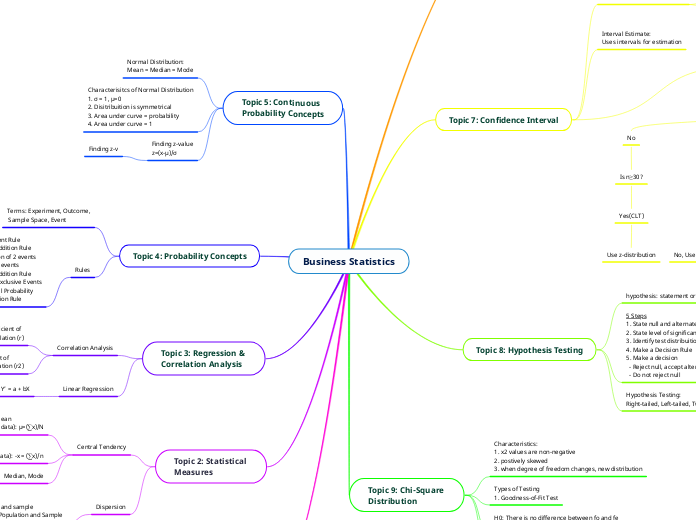によって kim c 3年前.
282
Business Statistics
Statistical measures and probability concepts are crucial in analyzing data and drawing meaningful conclusions. Measures of central tendency, such as the mean, median, and mode, help summarize data sets.

によって kim c 3年前.
282

もっと見る
(Grouped Data): ¯x = (∑fx)/n
(Grouped Data): μ=(∑fx)/N
Negative, Positive, or No correlation
Yes
Is σ known?
Yes, use z-distribution
No, Is n≥30?
Yes (CLT), Use z-distribution
No, Use t-distribution
No
Is n≥30?
Yes(CLT)
Use z-distribution